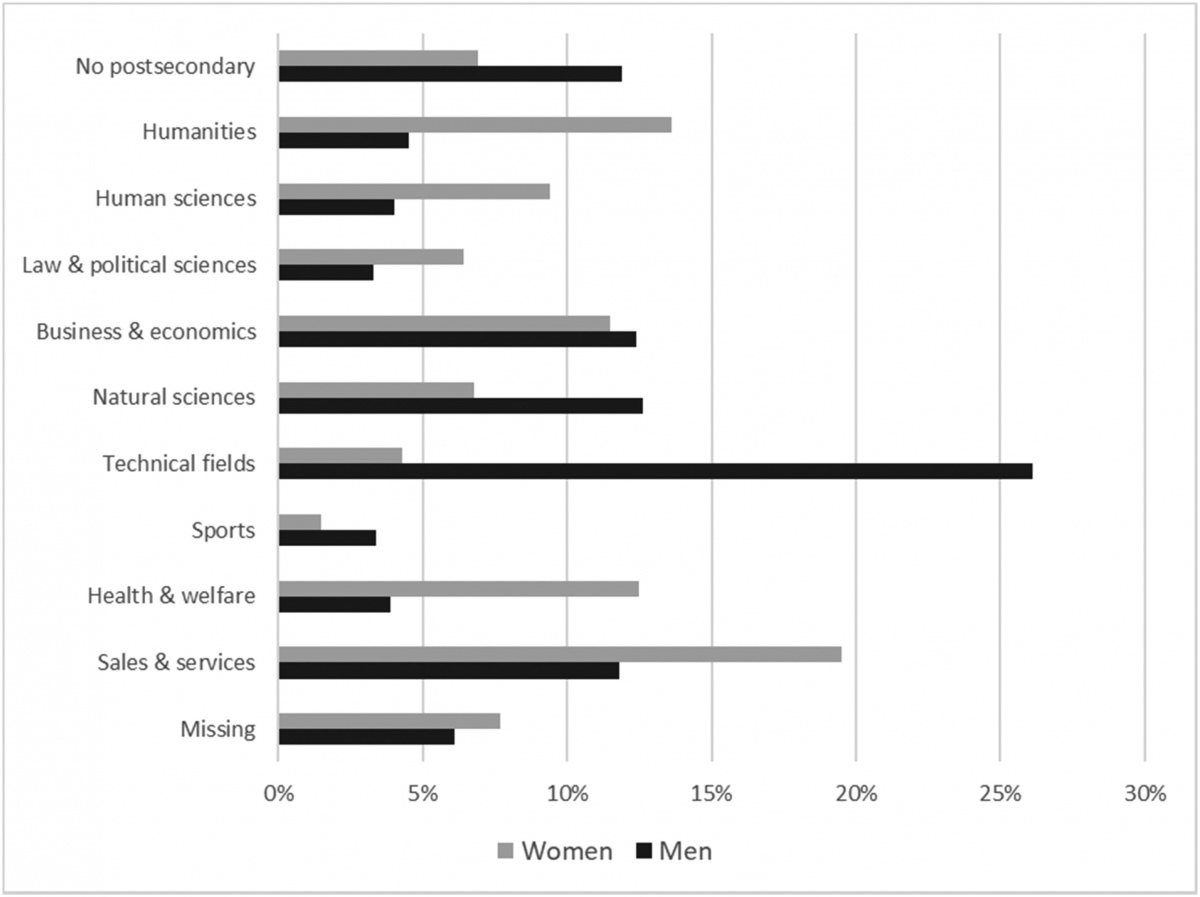Explaining gender segregation in higher education: longitudinal evidence on the French case
Explaining gender segregation in higher education: longitudinal evidence on the French case

 Image Chinnapong (via Shutterstock)
Image Chinnapong (via Shutterstock)
Explaining gender segregation in higher education: longitudinal evidence on the French case
Estelle Herbaut, Carlo Barone (Sciences Po, OSC)
British Journal of Sociology of Education,
Published online 11 March 2021,
DOI 10.1080/01425692.2021.1875199 (Taylor & Francis Online)
This article examines how girls and boys choose their tertiary field of study and how the different factors driving their choices contribute to gender segregation in higher education (GSHE) in France.
The paper presents seven theoretical explanations for GSHE (gender gaps in mathematics, the comparative advantage of girls in humanistic subjects, teachers’ gender biases in the perceptions of student skills, parents’ informal pressures towards stereotypical field of study choices, curricular specialisation in high school, the gendered career orientations of students, and their preferences for different types of jobs), a review of the relevant literature and discuss their applicability to the French context.
Using rich longitudinal data combining administrative sources, students, parents and school head questionnaires, the authors assess the heuristic value of these explanations. They employ multinomial logit models as well as decomposition techniques for categorical outcome variables. Their results refute explanations arguing that GSHE reflects gender differences in skills or girls’ lower career ambitions.
They conclude that curricular differentiation and occupational plans are key drivers of GSHE, even when controlling for ability selection into secondary curricula and for parental and teachers’ gender-stereotypical influences.

Figure - Tertiary field of study of enrolment by gender









